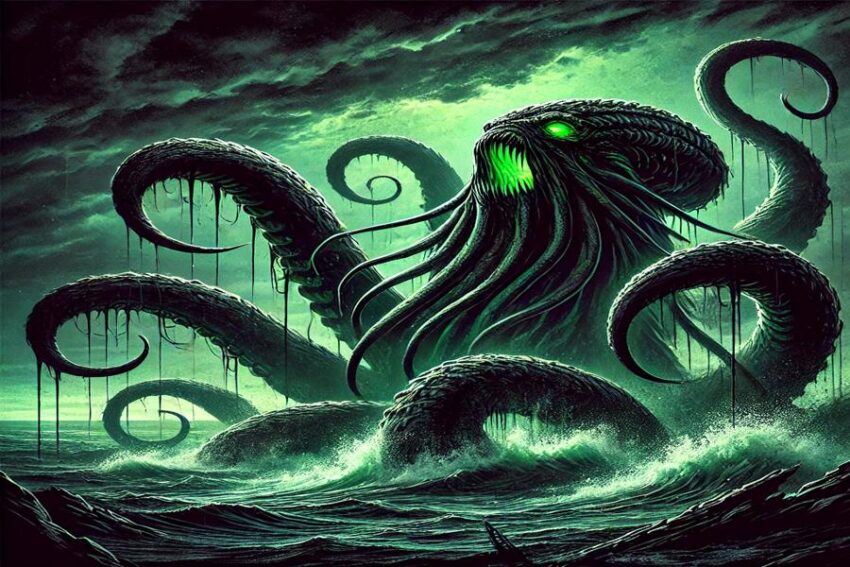Table of Contents
13 of the Most Bizarre Sea-Faring Mythology Stories
From ancient sailors navigating uncharted waters to gods controlling the oceans, mythology is full of strange and eerie sea-faring stories. These tales feature monstrous creatures, mysterious islands, and gods who toy with the lives of sailors. Here are 13 of the most bizarre sea-faring myths from cultures across the globe, each with its own sense of wonder and dread.
1. The Kraken (Norse Mythology)
The Kraken is one of the most fearsome sea monsters in mythology. Originating from Norse legend, it was said to be a gigantic squid-like creature lurking off the coast of Norway and Greenland. Sailors feared it because of its size—so massive that it could drag entire ships to the bottom of the ocean with its enormous tentacles. Some even believed the Kraken caused whirlpools when it submerged, swallowing ships whole. Though based on sightings of giant squids, the Kraken became a symbol of nature’s terrifying power at sea.
2. The Wandering Dutchman (Dutch Legend)
The tale of the Flying Dutchman is one of the most enduring ghostship stories. According to legend, Captain Hendrik van der Decken defied a storm and swore that he would round the Cape of Good Hope, even if it took him until Judgment Day. As punishment for his hubris, he and his crew were cursed to sail the seas forever as a ghost ship, unable to make port. Sailors who spotted the ghostly vessel believed it was an omen of doom, heralding storms or other disasters at sea.
3. Charybdis and Scylla (Greek Mythology)
Sailors in Greek mythology faced a terrifying dilemma when navigating the Strait of Messina between Italy and Sicily. On one side, they encountered Charybdis, a giant whirlpool that could swallow entire ships. On the other side was Scylla, a six-headed sea monster that snatched sailors from passing ships. The phrase “between Scylla and Charybdis” symbolizes a no-win situation, reflecting the inescapable doom ancient mariners felt when facing such perilous sea creatures.
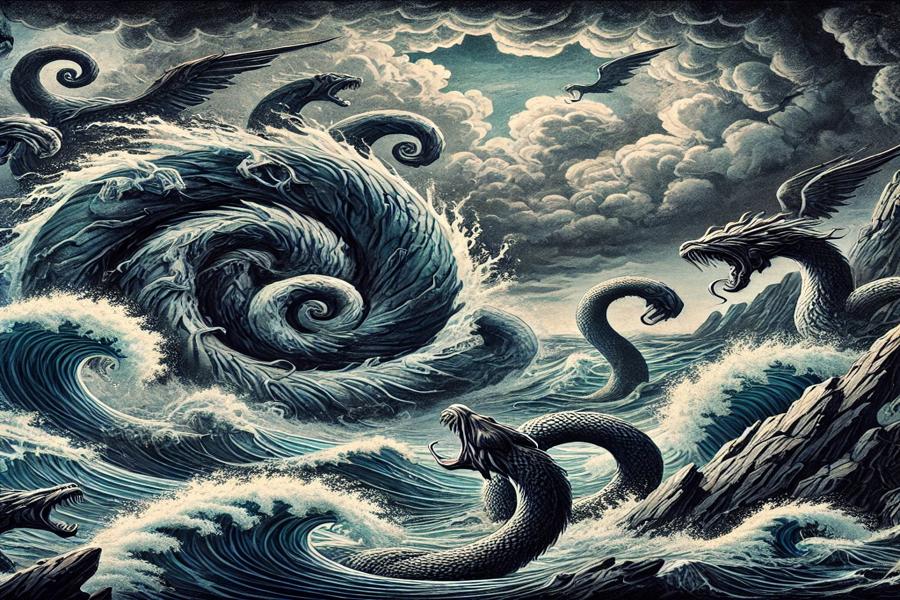
4. Davy Jones’ Locker (British Sea Lore)
Davy Jones’ Locker is a nautical metaphor for the ocean’s bottom, where drowned sailors are said to end up. In British folklore, Davy Jones is portrayed as a sinister figure who claims the souls of those lost at sea. Some tales depict him as a devilish spirit of the sea, while others imagine him as a greedy innkeeper who tricked sailors into their doom. Sailors feared ending up in “Davy Jones’ Locker,” which became synonymous with death at sea.
5. The Island of Aeaea and Circe (Greek Mythology)
In Homer’s Odyssey, the hero Odysseus lands on the island of Aeaea, where the enchantress Circe turns his crew into swine. Circe’s island is a place of strange magic, where time seems to stand still and transformation rules. Odysseus is only able to free his men after spending a year with Circe and using a magic herb from the god Hermes. This strange tale of enchantment and transformation adds a layer of bizarre magic to the sea-faring epic.
6. Sedna, the Inuit Sea Goddess (Inuit Mythology)
Sedna is a powerful sea goddess in Inuit mythology, and her story is both tragic and eerie. Betrayed by her father, who cut off her fingers as she clung to his boat, Sedna sank to the ocean floor and became the goddess of the sea and marine creatures. Her severed fingers transformed into seals, whales, and other sea animals, and Sedna now controls their fate. Hunters must appease her to have successful hunts, and if angered, she can cause violent storms and withhold sea life.

7. The Sirens (Greek Mythology)
The Sirens are famous for luring sailors to their doom with their irresistible songs. These half-bird, half-woman creatures lived on a rocky island and sang beautiful melodies that would cause sailors to crash their ships on the rocks in an attempt to reach them. In Homer’s Odyssey, Odysseus orders his men to plug their ears with beeswax to avoid the Sirens’ song, while he himself is tied to the mast so he can experience their song without succumbing to its deadly allure.
8. The Cursed Ship of Ulysses (Greek Mythology)
In Greek mythology, the hero Ulysses (Odysseus) encountered many perils at sea, but one of the strangest involved a cursed ship. After angering the god Poseidon, Ulysses’ ship was continually blown off course by storms, forcing him to wander the seas for years. Poseidon even transformed one of Ulysses’ sailors into a stone for defying him. This endless cycle of wandering and divine intervention made Ulysses’ journey one of the most bizarre odysseys in mythology.
9. The Leviathan (Biblical Mythology)
The Leviathan is a massive sea monster mentioned in the Hebrew Bible, particularly in the Book of Job. It is described as a powerful and terrifying creature, often depicted as a giant serpent or dragon that rules over the seas. In some interpretations, Leviathan symbolizes chaos, and it is considered so powerful that only God could control or slay it. This mythological sea beast is among the most iconic creatures in sea-faring lore.
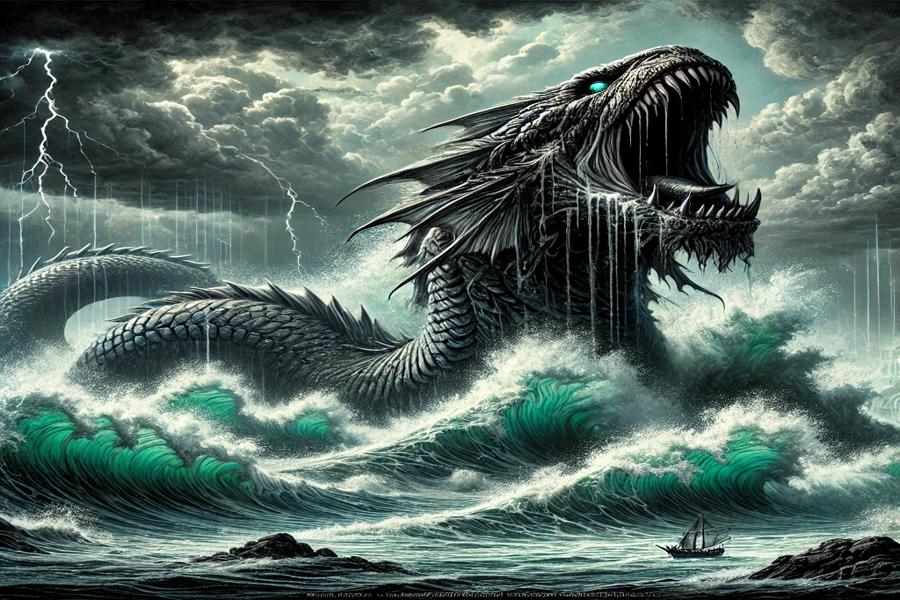
10. The Merrow (Irish Mythology)
In Irish folklore, Merrows are sea creatures similar to mermaids but with a more melancholic nature. They were said to have the ability to walk on land by shedding their sea coats. While they are often depicted as beautiful women, Merrows could also lure sailors to their doom, or marry them, with some legends saying they would return to the sea, leaving their human husbands behind. These creatures were a symbol of both beauty and danger for Irish sailors.
11. The Nykur (Scandinavian Mythology)
In Scandinavian folklore, the Nykur is a water spirit that often takes the form of a horse. It lures people to mount it, then drags them into the water, drowning them. The Nykur is a symbol of the dangers that lurk in seemingly peaceful bodies of water. While more often associated with lakes and rivers, tales of the Nykur also spread to coastal regions, warning seafarers to be wary of strange creatures lurking in the waters.
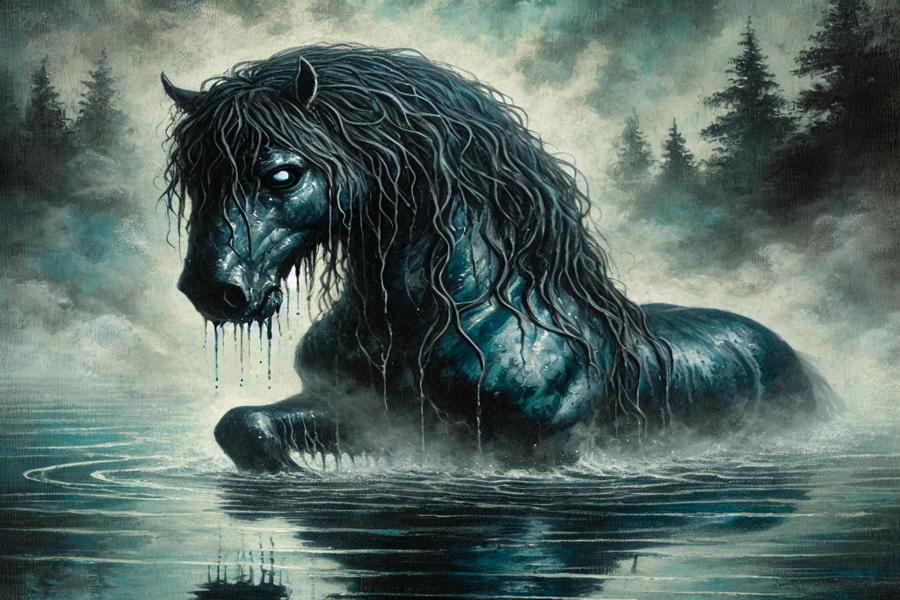
12. Urashima Taro and the Underwater Palace (Japanese Mythology)
Urashima Taro, a fisherman in Japanese folklore, saved a turtle and, as a reward, was taken to the underwater palace of the Dragon God. He stayed there for what seemed like a few days, but when he returned to the surface, he found that 300 years had passed. The story of time moving differently in the sea is a strange and poignant myth, reflecting the surreal nature of life beneath the waves.
13. The Lusca (Caribbean Folklore)
In Caribbean mythology, the Lusca is a terrifying sea creature believed to be a giant octopus or half-shark, half-octopus hybrid. Found near underwater cave systems like the Blue Holes of the Bahamas, the Lusca is said to snatch unsuspecting swimmers and divers, pulling them to a watery grave. The myth reflects sailors’ fear of the unknown dangers lurking beneath the surface, with the Lusca embodying the terror of the deep sea.
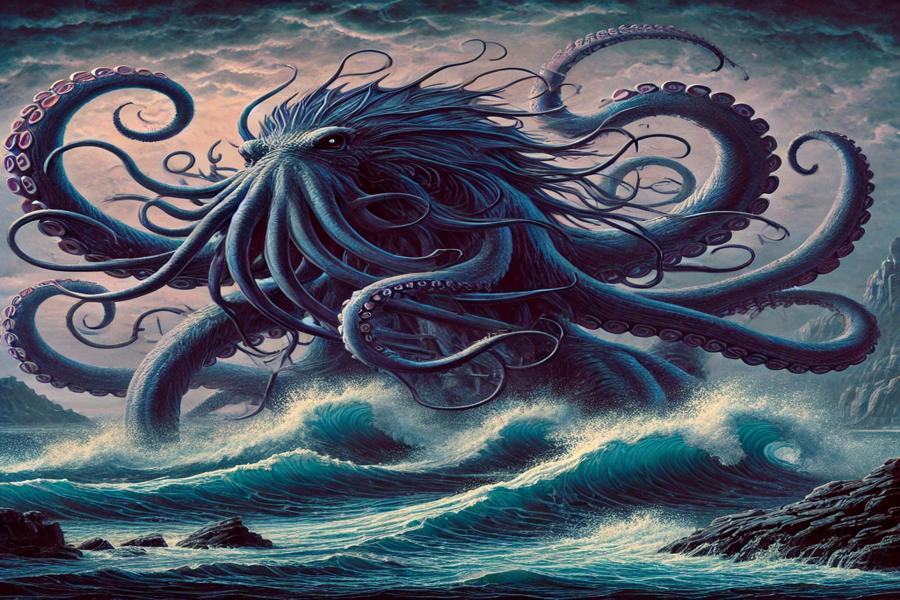
Conclusion
These bizarre sea-faring myths remind us that the ocean has always been a place of mystery, danger, and wonder. From ghost ships and sea monsters to gods who toy with mortals, the sea has served as both a setting and a force of its own in mythology. Sailors from across cultures told these tales to explain the unexplainable, creating stories that still capture our imaginations today. Whether battling sea serpents or outwitting tricky gods, the legends of the sea continue to inspire awe and terror.
